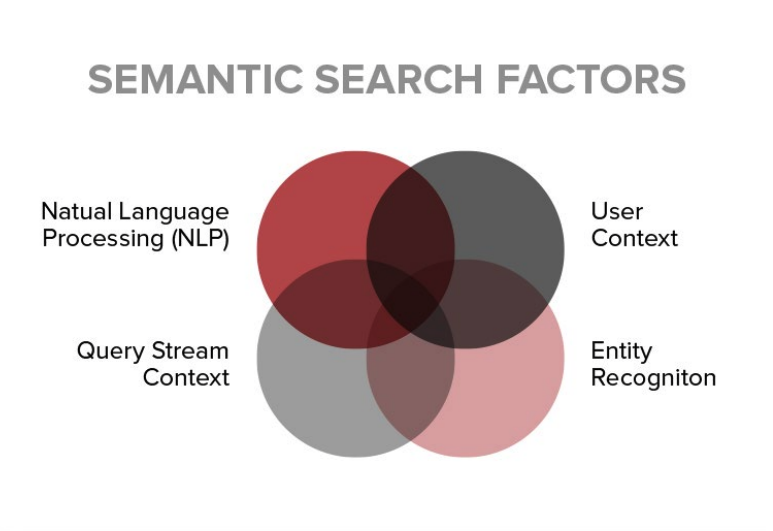Semantic Search is the methodology by which search engines are trying to change the way information is displayed by factoring in search intent and deciphering natural human language. Long gone are the days of simply gathering as many backlinks as possible or identifying what keywords you want and popping them into the site copy. Now, you need to understand what the searcher is really looking for and how your site can help them find that.
To do this, Google will consider the user’s search history, location, spelling, and other factors to try to determine exactly what they mean and show them the correct information. One example of this is if you search for food on your mobile device – you’ll see the closest open locations at the top. If you’re in New York City and Google “pizza”, you wouldn’t want to see a pizza shop in Chicago (NY style is better anyway).
Tailoring your site content to help the user answer their questions is what Google is really looking for. And while it may not be feasible to go back and change all of the old content on your site, it should definitely be on your radar going forward when it comes to content creation.
Semantic Search in Action
An example of semantic search in the eCommerce space is making the site easier to navigate and understand. If users can find what they are looking for right away, they might peruse the rest of your site and could end up adding some additional items to their cart. Another way to use semantics in your eCommerce store is to make the experience personalized to the user. For example, if someone has searched in the past for products generally geared towards women, i.e. skirts, dresses, etc, when they then search for “shorts” or “shirts” your site search can prioritize showing them women’s shorts and shirts since that user has the intent of looking for womens clothing.
This shift to semantic search is driven by the increase in voice search, which is changing how SEO is being done. In order to optimize for voice searches you need to answer their question quickly at the top of the page before getting into the details. Using structured data on your page will help search engines understand what is on the page and the context behind it.
Transitioning from optimizing your content for specific keywords and instead moving towards optimizing for topics will help your content rank well and help your users get their answers quickly. Think of those “ultimate guides” or “comprehensive resources” that you may see on the internet.

Identify Intent
Look to understand the searches that bring people to your website and categorize them by intent. Are they comparative searches? Transactional? Create content that addresses those specific queries as opposed to creating content for a singular keyword.
Finally, optimizing your technical SEO is important to help search engines get an understanding of your content. Optimizing your URL, title, header tags, meta tags, etc. is still important. Adding those structured data snippets we touched on earlier also goes a long way to helping search engines understand your content. And finally, with the large transition to voice search, make sure your website is speedy and is able to quickly pull the answers to your users questions.
Want to get more ideas on how to improve your SEO performance for 2021 and into 2022? Read our white paper on 16 Tips for Better SEO Rankings. Ready to win more website traffic and have a site optimized for semantic search? Reach out to the a(m) team to get started.
